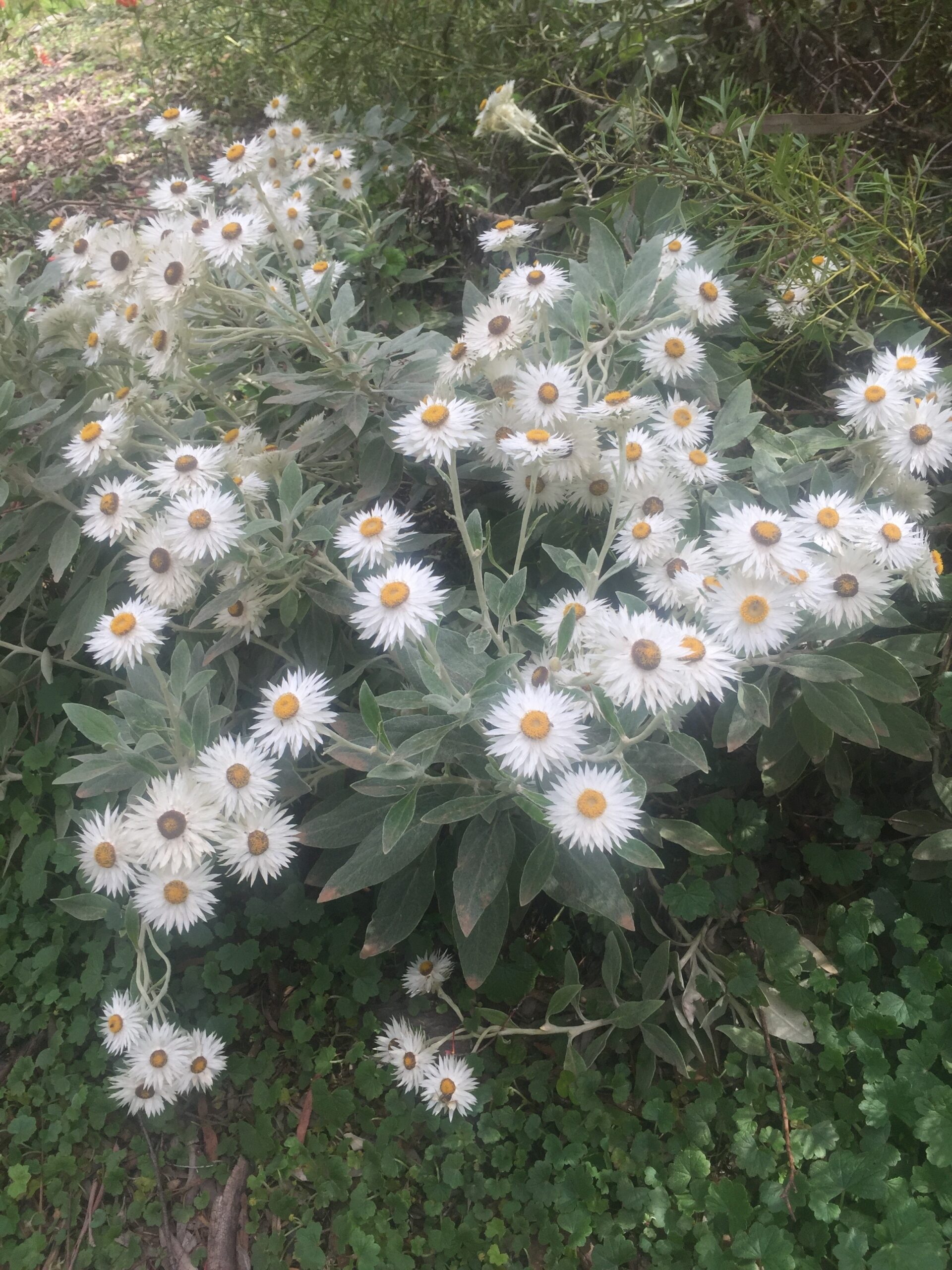Twelve new species and a new genus of iconic Australian paper daisies are revealed with the help of TERN’s curated leaf tissue samples. The taxonomic review of this charismatic group is described in a national study (and two new publications) using multiple lines of morphological and molecular evidence.
Image: Leucozoma elatum (credit: Tim Collins)
The importance of getting taxonomy right
Taxonomy is a branch of science for discovery, characterisation, classification and naming of species of plants, animals, fungi and micro-organisms. The exploration and description of Australia’s biodiversity is critical to enable protection and conservation, as natural habitats and ecosystems diminish and are modified through the Anthropocene. According to Taxonomy Australia, only about 30% of Australia’s biodiversity is described, while its vision is to discover all of Australia’s species within a generation.
“Exploring and describing the phylogeny of all living things is an important part taxonomy and biosystematics. With new tools and concepts, from DNA analyses to high-end computing, taxonomists and biosystematists can explore the tree of life and the relationships of the world’s organisms in exquisite detail.”
Taxonomy Australia, Australian Academy of Science

Xerochrysum macsweeneyorum (credit: Tim Collins)
Paper daisy detective
Golden everlasting paper daisies, or strawflowers, are iconic Australian endemic plants, popular in the horticultural industry for over 200 years and an important food source for invertebrates. In a new paper, Dr Tim Collins and colleagues described 12 new species within the genus Xerochrysum (Asteraceae: Gnaphalieae). The authors used morphological and molecular analyses to define species, detect common ancestry among populations, and identify potential hybrids in this paper daisy genus. For this comprehensive taxonomic investigation, golden everlasting paper daisy specimens were sourced from herbaria and collections across all Australian states and territories. The authors have published revised descriptions of all taxa in the genus, their conservation status, a dichotomous key, tables distinguishing closely related taxa, images of voucher specimens and distribution maps.
In a second paper, Dr Collins and colleagues gathered morphological data and genome-wide single nucleotide polymorphisms to infer the evolutionary relationships of Xerochrysum, Coronidium, and Helichrysum leucopsideum, and to test the limitations of the genera. Excitingly, this work resulted in a new genus Leucozoma for seven taxa previously included in Coronidium.
TERN field samples lead to discovery of new species
The Xerochrysum bracteatum complex has been regarded as taxonomically confusing and in need of revision for over 60 years. Paper daisy leaf tissue samples from species of the genera Xerochrysum, Coronidium and Helichrysum stored in the TERN Australia Soil and Herbarium Collection at the University of Adelaide were provided for the molecular analysis.
“A TERN collection by Ian Fox at Nombinnie Nature Reserve was important in providing data to differentiate the new species X. hispidum. The TERN samples of X. subundulatum were also important in testing the relationships between Tasmanian and mainland populations of this species.”
Dr Tim Collins
TERN’s curated leaf tissue samples collected from over 800 plots across Australia are available to be used in molecular analysis, stable isotopic analysis, biochemical work, and ecophysiology and functional ecology research. All plant tissue samples are identified by an herbarium botanist, resolvable to a vouchered specimen, rapidly dried to preserve DNA and stored in synthetic gauze.
Collections and taxonomy are a key foundation of Australia’s research infrastructure
As a national research infrastructure capability, TERN is committed to implementing the step-change plan outlined in the Australian Government 2021 National Research Infrastructure Roadmap. The Roadmap recommends an increased focus on a national approach to collections. TERN is working with the Australian Government, along with other national research infrastructure facilities and research institutions to increase the visibility and uptake of the TERN Australia Soil and Herbarium Collection.
“Collections are used by researchers to investigate our natural world, society and history and increasingly offer powerful insights into threats such as climate change and natural disasters. Advances in new technologies such as AI/ML, digitisation, sample analysis, genomics and transcriptomics are transforming the way these collections can, and are, being used to unlock new research possibilities…..Physical collections of specimens and taxonomy are also critical to support the identification of biosecurity risks and determine action, supporting Australia’s environmental and climate adaptation strategy.”
2021 National Research Infrastructure Roadmap, Australian Government.
Collins et al. are now preparing a manuscript to publish four new species (two in Coronidium and two in Leucozoma) that drew upon TERN samples to delimit these new species.







